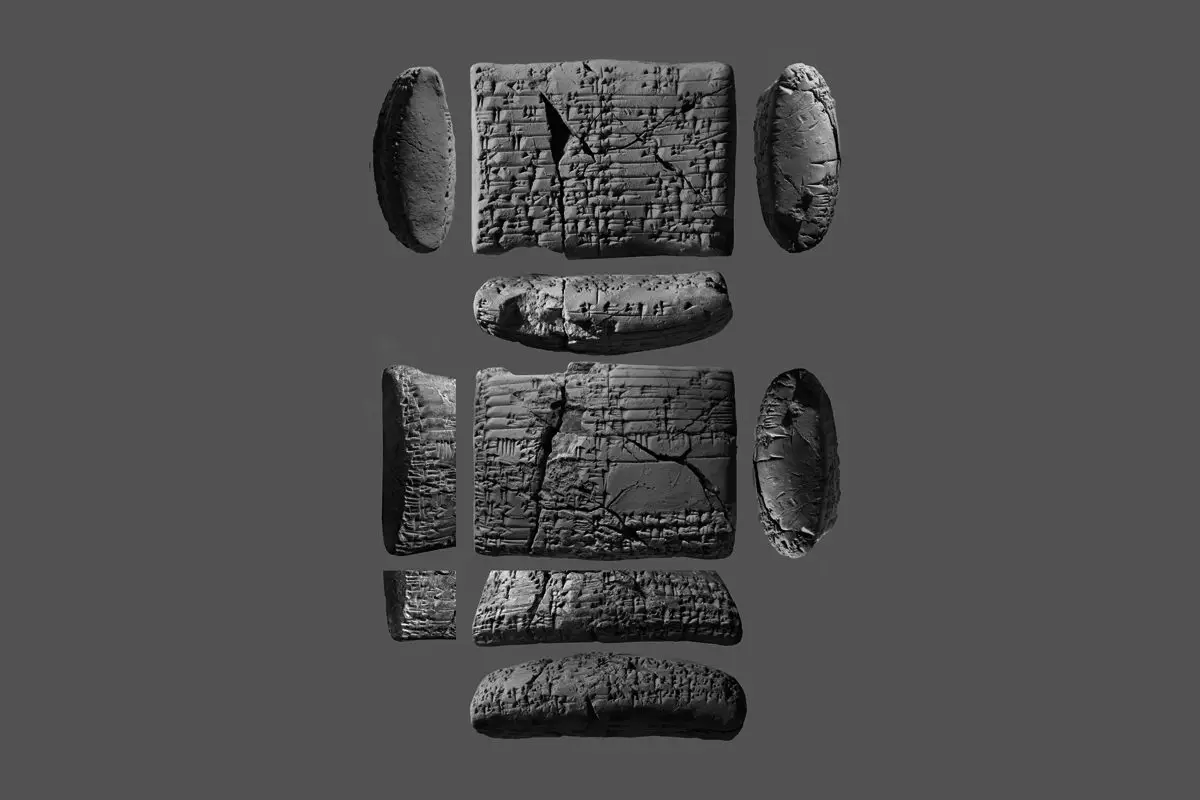Researchers have decoded a lost Canaanite language, written on two clay tablets from 4,000-years-ago.
The tablets were discovered in Iraq during the 1980’s, one ending up in a private collection in England, the other at the Jonathan and Jeanette Rosen Cuneiform Collection in the United States.
The provenance of how the tablets ended up in the west is unclear, but they were likely found during the time of the Iran-Iraq War, from 1980 to 1988.
Both tablets record phrases in an unknown language of the Amorites, an ancient Northwest Semitic-speaking people from the Levant, who also occupied large parts of southern Mesopotamia.
The phrases are written in a cursive Old Babylonian cuneiform, alongside translations in the Old Babylonian dialect of the Akkadian language (which itself was deciphered in the middle of the 19th century), enabling the scholars to read the unknown language for the first time.
Essentially, the tablets are similar to the Rosetta Stone, a stele inscribed with three versions of a decree issued in Memphis, Egypt, during the Ptolemaic dynasty. The top and middle texts of the Rosetta Stone are in Ancient Egyptian using hieroglyphic and Demotic scripts respectively, while the bottom is in Ancient Greek, making the Rosetta Stone key to deciphering the Egyptian scripts.
Researchers, Manfred Krebernik, and Andrew R. George, have been analysing the tablets since 2016, with the results of the their study now published in the latest issue of the French journal Revue d’assyriologie et d’archéologie orientale (Journal of Assyriology and Oriental Archaeology).
By looking at the grammar and vocabulary, the researchers have determined that the lost language is part of the West Semitic family of languages, which includes Hebrew and Aramaic.
“The singularity of the two tablets’ content may indicate that they come from the same scriptorium. They are sufficiently similar in handwriting to suggest that they may even be the work of the same individual scribe,” said the researchers.
The contents on Text 1 describes the names of deities, stars and constellations, foodstuffs and clothing. Text 2 is entirely devoted to bilingual phrases drawn from social intercourse.
The presence of alkam ana ṣ ē r ī – ya “come here to me” near the end of Text 1 and of alkam “come here” at the beginning of Text 2, suggests that the latter is a sequel document and further reinforces the argument that the tablets are the work of the same person.
https://doi.org/10.3917/assy.116.0113
Header Image Credit: Rudolph Mayr – Rosen Collection







